Coastal Science Assistantship Program (CSAP)
Background | Protocol | Requirements | Benefits | Application | Selected Proposals | Student Bios | Contact
Past Students
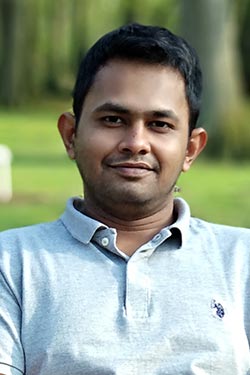 Omar Shahrear Apu
Omar Shahrear Apu
Louisiana Tech University
Major Professor: Jay Wang
Project Title: Development of a standardized (American Society for Testing and Materials, ASTM), repeatable, and consistent geotechnical laboratory testing procedure for the Low Stress Consolidation Test for the Marsh Fill
Marsh creation projects make up a large part of the 2017 Coastal Master Plan; however, there can be high subsidence of fine-grained soils dredged from inland riversides. To better understand how these sediments will settle and consolidate, Apu will develop a standardized, consistent geotechnical laboratory testing procedure for low stress consolidation of marsh fill. Since regular, soft clay differs from exceedingly soft dredged fill, different transportation and pumping processing procedures may need to be considered. The purpose of Apu’s research will be to determine where conventional procedures should be modified to handle extremely soft dredged fill material, recommend tests specific to dredged material and interpret data. Special attention will be paid to the seating load, sample preparation, settlement measurement and loading schedule. To fully develop his research potential, Apu wants to deploy research accomplishments to solve practical problems, with aspirations of becoming someone who works on technically extensive scale demanding projects. This specialization is appealing due to its multidisciplinary nature, which will broaden horizons and give flexibility in professional practice. Apu hopes to continue working in research by pursuing a doctoral degree.
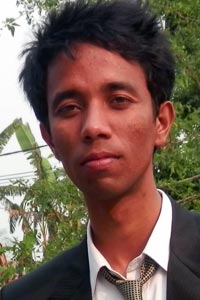
Sujan Baral
Louisiana Tech University
Major Professor: Jay Wang
Project Title: Soil binding ability of natural vegetation Spartina alterniflora established on dredged soils in Louisiana coastal area
Sujan Baral is pursuing his master’s degree in civil engineering from the College of Engineering and Science at Louisiana Tech University. His research will evaluate the anti-erosion ability of various vegetation – such as grasses and trees – for coastal protection. After earning his degree, his goal is to become a researcher in the field of civil engineering.
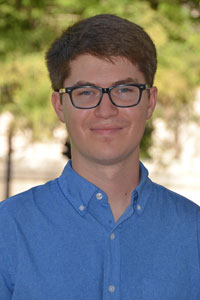 Jack Cadigan
Jack Cadigan
Louisiana State University
Major Professor: Navid H. Jafari
Project Title: Comprehensive Sediment Balance of Marsh Creation Projects: From Hydraulic Dredging to Self-weight Consolidation
While many in Louisiana understand the problem of coastal wetland loss, many do not fully understand the efforts being undertaken to combat the loss. Cadigan seeks to address this with his research. Marsh creation projects are one of the ways Louisiana is trying to combat the coastal wetland loss problem. As marsh elevation dictates both biological productivity and the volume of dredged fill required by a marsh creation project, his research aims to optimize marsh creation design by developing guidelines for estimating the hydraulic efficiency and cut to fill ratio of dredged sediments for marsh creation projects. He then hopes to communicate how the marsh creation process works to locals and get feedback from them regarding who would be affected by the success or failure of these projects.
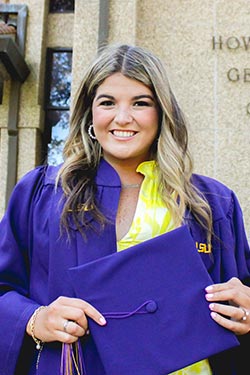 Rory Elizabeth Escobedo
Rory Elizabeth Escobedo
Tulane University
Major Professor: Mead Allison
Project Title: Quantifying Land Subsidence in the Mississippi Delta Region Through Sentinel-1 InSAR Time-Series Analysis
Escobedo’s research focus is geology, specifically subsidence rates within the Mississippi Delta region. The Mississippi River Delta (MRD) has seen a gradual loss of land, intensified by rising sea levels. Escobedo will use a radar technique, Interferometric Synthetic Aperture Radar (InSAR), to map ground elevation change in the MRD. She also plans to use satellite data to examine where InSAR might provide subsidence data in wetland-dominated settings. She hopes total subsidence maps for the MRD can be derived from the research. After completing her master’s degree, she plans to work in the private industry, preferably one with a large community outreach.
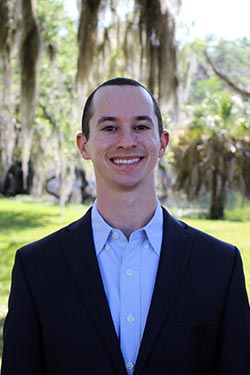 Robert Feder
Robert Feder
Louisiana State University
Major Professor: John R. White
Project Title: The Effect of ‘Freshening’ by Sediment Diversion Flow on the Porewater Salinity, Nutrient Availability and Water Quality Improvement Functions of Barataria Bay Marsh Soil
Coastal restoration efforts in Louisiana rely on river re-connection with the coastal basins to deliver sediment to these subsiding (sinking) systems. Previous models show surface water salinity will be lower after the Mid-Barataria Sediment Diversion. The question remains, how will this change affect the wetland plants and the microbial pool (all of which control important processes within coastal wetlands) present within the basin’s soil? Feder will be investigating how river reconnection and ultimately freshwater reconnection alters porewater salinity and other biogeochemical processes in a range of coastal systems (i.e., freshwater marsh, brackish marsh and salt marsh). He hopes to expand his quantitative skillset and understanding of coastal processes so that he can pursue a career in designing and implementing wetland restoration projects. Ultimately, Feder hopes to collaborate with scientists, engineers, and policymakers on safeguarding the ecosystem services that our wetland systems provide.
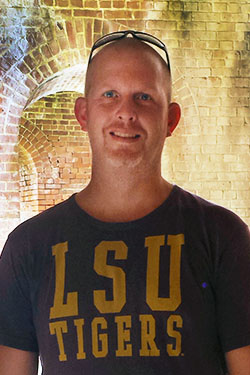 Adam Gartelman
Adam Gartelman
Louisiana State University
Major professor: Kehui Xu
Project Title: Quantifying Erosional Process in Sediment Diversion Receiving Basins
The diversion of sediment-laden river water into adjacent basins is often recommended as a coastal restoration method, but the erosional processes occurring in those basins is not well studied. Current predictions for diversion effectiveness need stratigraphy and erodibility data to be robust and accurate. Gartelmen will work to better understand the super shallow water stratigraphy, the marsh edge erodibility and the marsh edge morphology in middle Barataria Bay and middle Breton Sound, both near and farther from the diversion site. This work will add to a growing volume of valuable data on the erosional processes that must occur before the new lands are built in Barataria Bay. Gartelman hopes to continue researching erosional processes that are threatening coastlines, wetlands and barrier islands. While continuing to perform valuable research, he wishes to impart his knowledge onto future generations of scientists who would be able to build on this valuable research. After receiving his master’s degree, Gartelman hopes to complete a PhD in Oceanography and Coastal Sciences and hopefully move into the academic realm.
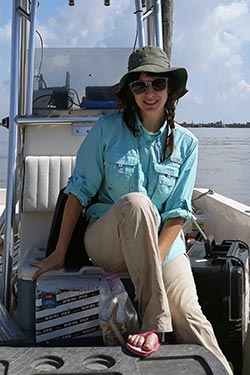 Katrina Ginsberg
Katrina Ginsberg
Tulane University, Earth and Environmental Science
Major Professor: Mead Allison
Project Title: Sedimentary Aspects of Land-building in the Fort St. Phillip Crevasse Complex
My research will focus on marshland that is building around the Fort St. Philip crevasse area. I am interested in the type and distribution of vegetation, the sediment trapping efficiency of the vegetation, rates of sedimentation, and patterns of succession. The goal is to help to answer questions about the planned Mid-Breton sediment diversion, particularly how pulses of sediment will impact existent marsh and contribute to land aggradation.
I hope to become a research scientist working on coastal restoration around South Louisiana and other large deltas across the world.
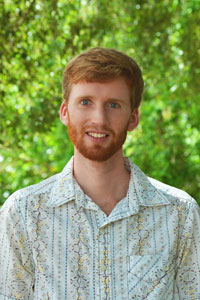 Brian Harris
Brian Harris
Louisiana State University
Major Professor: Navid H. Jafari
Project Title: Predicting Subsurface Settlement of Marsh Creation Projects and Flood Protection Infrastructure in Coastal Louisiana
Harris’s research group has seen the severity of coastal erosion and degradation first hand. Motivated by this, he is examining the geotechnical uncertainties of marsh creation and beach restoration sites throughout coastal Louisiana. Coastal regions, especially Louisiana, have highly unique soils. The soils in one basin can be drastically different to adjacent areas due to varying depositional environments altering plasticity, organic content, and compressibility. For this reason, accurately estimating the soil properties across the state is critical in ensuring the longevity of the project.
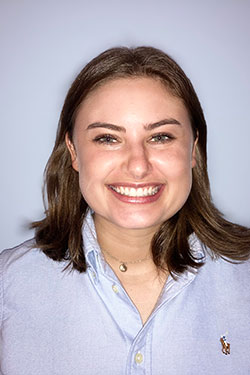 Elizabeth Harris
Elizabeth Harris
Louisiana State University, Department of Oceanography and Coastal Sciences
Major Professor: Tracy Quirk
Project Title: Factors Influencing Subsurface Wetland Dynamics in Coastal Louisiana: Implications for Wetland Response to Sea-level Rise and Restoration
Wetlands across the state of Louisiana are influenced by a variety of factors, and it is important to understand how different wetland types respond to both environmental changes and restoration strategies. Dr. Quirk and I will focus our research primarily on the subsurface dynamics of different wetlands across the state in order to examine the impact these dynamics have on the elevation of wetlands. We are also seeking to learn more about what other processes may be influencing subsurface changes in our wetland ecosystems
Growing up in southeastern Louisiana has equipped me with a deep admiration for the beauty of our wetland ecosystems, as well as a desire to learn more about them. I am interested in continuing to pursue research after my master’s with the addition of outreach and education. I am very passionate about science, but I also love to engage with people and share what I have learned. I want people to know that although it is important to study the science behind wetland processes, we must come together as a community to truly make a positive impact on our ecosystems. I desire to become both a researcher and an advocate for the conservation and restoration of our wetlands, and I am hopeful that the research I conduct will provide insights into how we can accomplish this goal for future Louisianans to enjoy.
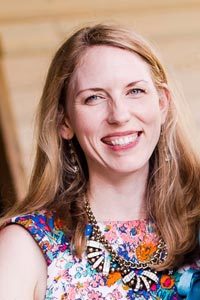 Allison Haertling
Allison Haertling
The University of New Orleans
Major professor: Marla Nelson
Project Title: Planning for Population Loss in Coastal Louisiana
In the face of coastal land loss, more advantaged residents tend to relocate, leaving behind the increasingly poor and elderly. The community composition will become further altered by subsequent declining tax revenues, reduced economic activities, increased blight, fewer resources and changes to local culture and heritage. Haertling will examine the changing population dynamics of Terrebonne Parish and resulting physical, social and fiscal impacts. This research seeks to identify the current and anticipated impacts of persistent population loss on coastal communities and the planning approaches that can be used to maintain existing infrastructure and services with a decreasing tax base. Haertling’s career goals include working in the renewable energy sector, floodplain/watershed management or green infrastructure. She is particularly interested in energy policy and the development of offshore wind technology in the Gulf of Mexico, specifically the possibility of converting decommissioned oil and gas drilling platforms to hydrogen and methane gas production and storage units powered by offshore wind.
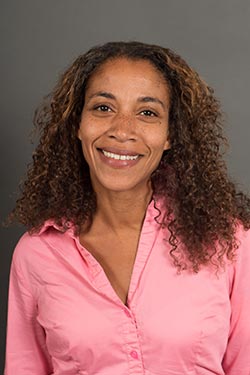 Sukari Ivester
Sukari Ivester
The University of New Orleans
Major professor: Marla Nelson
Project Title: Planning for Population Loss in Coastal Louisiana
In coastal communities across south Louisiana, land loss and environmental change have accelerated migration away from coastal communities (largely among the most advantaged permanent residents). This decrease in permanent residents, however, has been accompanied by a substantial increase in second homes for recreational fishers. The proliferation of recreational fishing camps in these formerly isolated bayou communities has potentially paradoxical effects, representative of what could be dubbed “climate gentrification”. The replacement of permanent residents with a part-time leisure-based population could threaten the rich tribal and Cajun heritage of these communities, increase need for infrastructure maintenance and encourage denser development in environmental sensitive, hazard prone ecosystems. My research will examine population dynamics in bayou communities and their physical, social and fiscal impacts. My plan is to focus my academic research on social justice, socio-ecological resilience, and climate change in Louisiana’s coastal communities.
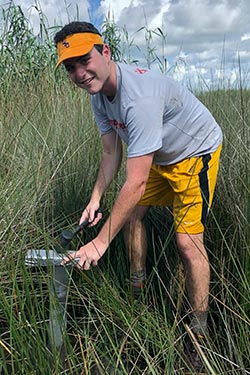 Erol Knaus
Erol Knaus
Louisiana State University
Major Professor: John White
Project Title: Determining Pre-project Wetland Soil and Estuarine Sediment Physical Properties and Phosphorus Cycling in the area of Influence of the Mid-Barataria Sediment Diversion
Dr. White and I will analyze the microbial activity and organic content of dredged sediment from the Mississippi River used for marsh creation projects in Barataria Bay. This sediment was dredged in 2016, and I will be looking for changes in wetland soil processes and ecosystem function that have occurred during the past four years. My primary objective is to determine how successful the soil was at growing vegetation.
Following graduation, I hope to secure a coastal engineering job in Baton Rouge. I would like to work on rebuilding and restoring the deteriorating Louisiana coastline by conducting marsh creation projects, similar to those I now research. I also am interested in studying the role of river diversions projects and their potential unintended impacts on ecosystems.
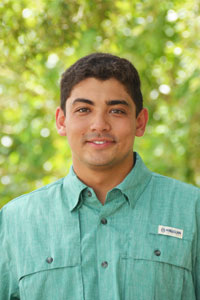 Peter Mates
Peter Mates
Louisiana State University
Major Professor: John White
Project Title: Determining Pre-project Wetland Soil and Estuarine Sediment Physical Properties and Phosphorus Cycling in the area of Influence of the Mid-Barataria Sediment Diversion
Mates has viewed Louisiana’s wetland loss first hand, which has helped motivate perspective his research. Over the next few years, he will be analyzing the physical properties and phosphorus cycling of wetland soil and estuary sediments near the mid-Barataria sediment diversion. Excess phosphorus is a concern as it can lead to harmful algal blooms, which are a risk to human health and coastal fisheries. Mates wishes to pursue a career in coastal management and work to combat Louisiana’s degrading wetlands.
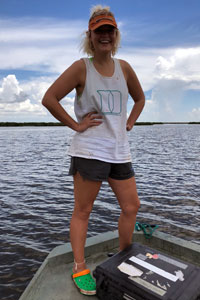 Marie Mathews
Marie Mathews
Tulane University
Major Professor: Torbjörn Törnqvist
Project Title: Understanding Mississippi Delta subsidence by integrating continuous coring with geodetic methods
Mathews will focus on Louisiana’s salt marshes and coastal restoration techniques being implemented across the state to protect these habitats. Specifically, she investigates the placement and performance of marsh terraces, which are designed to trap sediment and reduce erosion along marsh edges. If these terraces are as productive and beneficial as hoped, then resources can be more effectively devoted to their implementation and other projects can be improved by incorporating successful aspects of these terraces into their designs.
Growing up near the Jersey Shore, she has always valued beaches and life along the coast. After researching and experiencing Louisiana’s coastal land loss firsthand, she wants to devote her abilities – mentally and physically – to the restoration and protection of these environments.
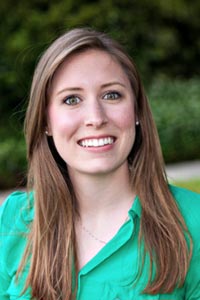
Meagan McCoy
University of Louisiana at Lafayette
Major Professor: Mark Hester
Project Title: Factors that determine patterns of wetland plant species zonation and productivity following sediment diversions
Meagan McCoy is working toward her master’s degree in the Department of Biology at the University of Louisiana at Lafayette. Her research is designed to improve scientific understanding of how sediment diversions may influence plant community composition and productivity, and the resulting data could be utilized to further refine predictive modeling of the effectssediment diversions on coastal ecosystems. After earning her master’s degree, she plans to work in wetland restoration.
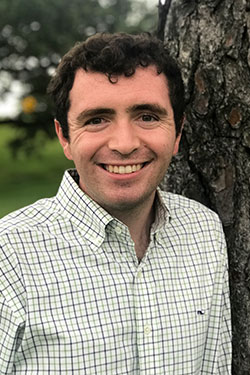 Michael McDonell
Michael McDonell
Louisiana State University, Department of Oceanography and Coastal Sciences
Major Professor: Giulio Mariotti
Project Title: Mud Settling Velocity in Barataria Bay: A Crucial (Yet Neglected) Parameter for Marsh Evolution
My research will focus on the mud settling velocity in Barataria Bay. Examining this settling velocity and its relationship to salinity will help to determine crucial marsh development strategies that will benefit the Louisiana coast. During the CSAP internship I plan to analyze existing databases of suspended sediment in Barataria Bay, including databases from Louisiana’s System-Wide Assessment and Monitoring Program, the Louisiana Department of Environmental Quality, the U.S. Army Corps of Engineers and data collected by Professor Gene Turner of LSU.
I aspire to find and implement plans of action that will save the Louisiana coast and preserve the ocean. Through research and working on restoration or preventative projects I want to ensure future generations have access to the ocean. It is critical to study oceanography as everyone directly relies on it, so by studying one small component it will help me continue on saving the coast. I hope to work in the public or private sector after graduation.

Mohiuddin Sakib
University of New Orleans
Major Professor: Ioannis Y. Georgiou
Project Title: Coupled Barrier Island and Shoreface Dynamics: A comprehensive understanding of coast-wide response to transgression
Sakib hopes to evaluate the shore face transport trends for both the short-term (event scale), near-term (~decadal scale, and longer-term (>20 year) time scales. He will do this by using coupled wave models with the flow module (within Delft3D Modeling Suite) and add sediment (multiple classes ranging from mud to sand using LASARD and BICM sediment samples distribution). This will create an assessment of key bypassing mechanisms of sediment along the shoreface, which is dominated by fine-grain sediments. This will also evaluate the fate of those sediments and provide insight into regional sediment budgets along the central coast of Louisiana. Moreover, assessing event-scale sediment transport, Sakib will figure out the additional implications on how sediment in exchanged between the shoreface and interior bays. Following graduate school, he plans to build a career in the field of coastal engineering.
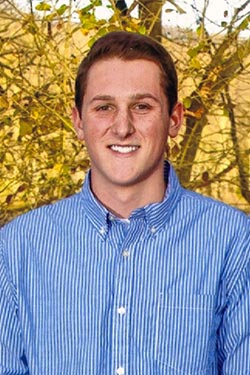 Nick Schuler
Nick Schuler
Louisiana State University
Major professor: Karen Luttrell
Project Title: Quantifying variability in subsidence patterns related to seasonal surface loads across coastal Louisiana
Subsidence rates are not uniform across Louisiana. Variations in sedimentation, erosion, compaction, changing hydrologic load and tectonic processes can result in regional and temporal differences in subsidence rates. Schuler will identify and quantify the sources of this geologic patchiness by analyzing variables like uplift, sediment loading and seasonal flooding in an effort to better understand subsidence rates across the state. These results will help reduce uncertainty regarding the geologic components of subsidence, which will result in more effective implementation of Louisiana Coastal Master Plan projects helping current and future efforts to sustain coastal ecosystems, safeguard coastal populations and protect vital economic and cultural resources. Schuler’s career goal is to build a long-term career in the oil and gas or environmental services industry. One of the main reasons he enjoys geoscience, particularly geophysics, is that there is a wide array of jobs to pursue when exiting the academic world. Throughout his career, he hopes to be able to solve complex problems and continue to learn new ideas each day in order to better develop his professional skill set.
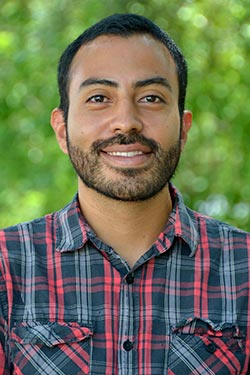 Omar Ulloa
Omar Ulloa
Louisiana State University
Major Professor: Navid H. Jafari
Project Title: Comprehensive Sediment Balance of Marsh Creation Projects: From Hydraulic Dredging to Self-weight Consolidation
Hydraulic dredging makes up approximately 60 percent of the cost for marsh creation projects, therefore it must be designed to minimize the volume of dredged material while ensuring the surface elevation. More accurate estimates of dredged fill quantities will lead to reduced costs, increased efficiency and successful ecological restoration. The outcome of Ulloa’s research will (1) provide guidelines for quantifying the hydraulic efficiency and cut-to-fill ratio of dredged fill and (2) codify standardized methodologies for determining the self-weight consolidation of dredged fill. The goal is to develop guidelines for estimating the hydraulic efficiency and cut-to-fill ratio of dredged sediments for marsh creation projects. Ulloa’s overarching educational goal is to deepen his knowledge of soil and sediment behavior to better understand natural and gray infrastructure design for coastal restoration and protection projects. He hopes to become an expert in the geotechnical field and have the knowledge and tools to design secure, well-performing infrastructure that will aid in the development of society, withstand nature’s hazards and avoid damage to surrounding communities.
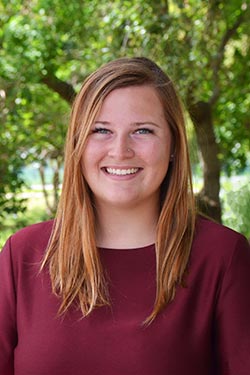 Jessica Villers
Jessica Villers
University of New Orleans
Major Professor: Ioannis Y. Georgiou
Project Title: Water and Sediment Fluxes in Restored and Unrestored Marsh Shorelines
The gulf coast of Louisiana has been subjected to shoreline erosion, a natural process that threatens marsh sustainability. Winter storm activity is particularly important to the northern Gulf of Mexico region; as cold fronts are frequent, high energy events accounting for increased erosion rates along the marsh edge. Waves generated by wind act as one of the main drivers of erosion; however, sediment lost by wave attack can be deposited on the marsh platform through the resuspension and reworking of materials. Villers aims to investigate how various restoration methods used for shore stabilization may influence water and sediment exchange compared to their natural counterparts, providing insight on both the long-term and short-term effects that restoration methods have on marsh sustainability. This research will identify regional trends in shoreline dynamics providing the framework to inform restoration efforts and decisions in south Louisiana and help prioritize future locations for restoration.
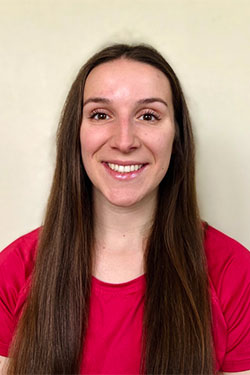 Sophie Vincent
Sophie Vincent
Louisiana State University, Department of Geology & Geophysics
Major Professor: Carol Wilson
Project Title: Time-varying Rates of Organic and Inorganic Mass Accumulation in Louisiana Marshes and Relation to Sea-level Change
I will be testing the hypothesis that organic mass accumulation rates in Louisiana marshes are related to sea-level fluctuations in Louisiana. This will be accomplished by quantifying organic and inorganic mass accumulation rates from radiochemically-dated cores extracted from key marsh locations in Barataria Bay. The findings from this research will provide information on how the marshes in the receiving basin of the Mid-Barataria Sediment Diversion may respond to increased inundation and sediment delivery expected during spillway operation.
In the future, I hope to work for a company that focuses on coastal restoration or the oil and gas industry.
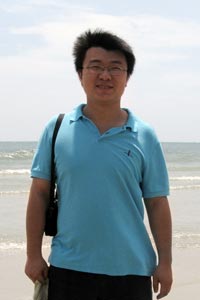
Bo Wang
Louisiana State University
Major Professor: Y. Jun Xu
Project Title: Determining sediment accretion and availability in the lowermost Mississippi River
Bo Wang is pursuing a master’s degree in watershed science from the School of Renewable Natural Resources at Louisiana State University. His research focuses on determining sediment accretion and availability in the lower Mississippi River. Riverine sediment is a valuable resource for Louisiana’s coast, but there are some unknowns about the variability of riverine sediment and actual divertible quantity in its lowermost reach in Louisiana. Following graduation, Wang plans to become a hydrology and watershed researcher.
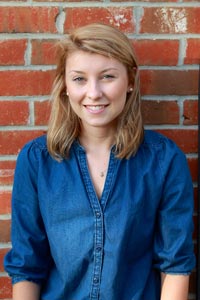
Celeste Woock
University of New Orleans
Major Professor: Alex Kolker
Project Title: Subsidence patterns and processes in coastal Louisiana: A comprehensive approach
Celeste Woock is working toward her master’s degree in the Department of Earth and Environmental Sciences at the University of New Orleans. She will be investigating patterns of subsidence across coastal Louisiana using a variety of datasets, such as water-level gauges, LIDAR, benchmarks, GPS stations and stratigraphic relationships. Short and long-term subsidence patterns remain one of the largest unknown aspects of the coastal zone and the intent of her project is to provide a better understanding of these patterns. Following graduate school, she plans to pursue a career in geophysical exploration.
